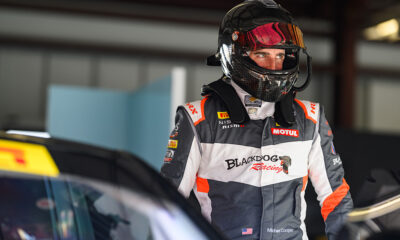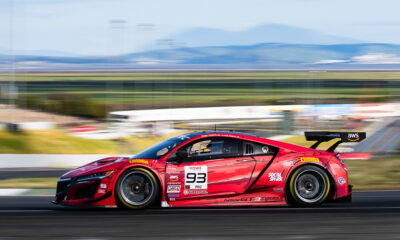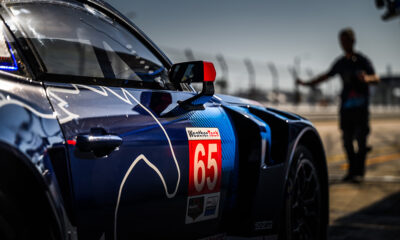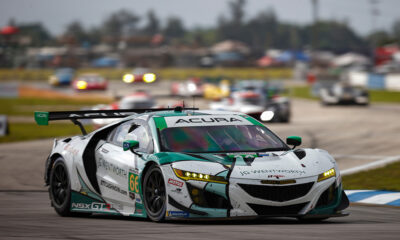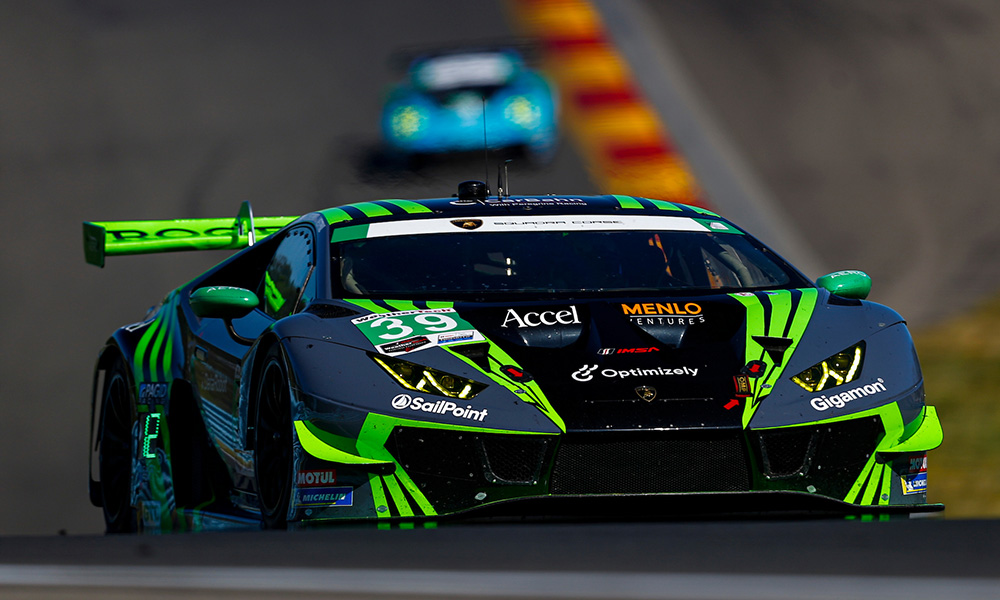
Photo: Jake Galstad/IMSA
I look forward to Watkins Glen every year. With rich history, high speed corners, and a flowing nature through the countryside of Upstate New York, the track is one of my favorite domestic road courses.
There is a certain personal reward from maximizing the car around a place like this—balancing the rear grip on a tightrope between the guardrails in corners over 100 mph. This 6-hour race is the third of the four endurance rounds on our 2022 calendar.
It’s a race in which I’ve had more than one podium in my career. Preparation was on all of our minds, as we recently completed a test day at Watkins Glen. The team felt ready to go with a starting setup, and Robert (Megennis) and I had some recent laps around the 3.4 mile circuit.
Mentally, we were at full speed before we hit the track. Or so we thought… Upon sampling the car in the first laps of Practice 1, the balance and handling characteristics we had established some days prior, and candidly expected to have, were absent.
The behavior that the No. 39 was exhibiting on track was quite the opposite. Fundamentally, it didn’t make very much sense. All drivers, including our third, Corey Lewis, found the car’s behavior equally uncomfortable. A nervous rear axle under braking and at turn-in, lack of front grip when carving to the apex, and then a massive snap into oversteer (rear instability) at the peak lateral load/center of the corner all contributed. These trends got worse as the vehicle speed went up, meaning we had even larger instability above 100 mph.
I expressed my concern with the handling behavior and asked the team to address the high-speed sensitivity first. This is because, as drivers, we have less manipulation ability in fast corners. My logic here is that stabilizing the car via setup will generally reduce the oversteer and snap events, while simultaneously making all of the understeers (front axle slides) larger.
However, in low speed corners, which are generally preceded by a brake zone, I can keep more brake and load on the front axle longer to counteract the understeer mid-corner.
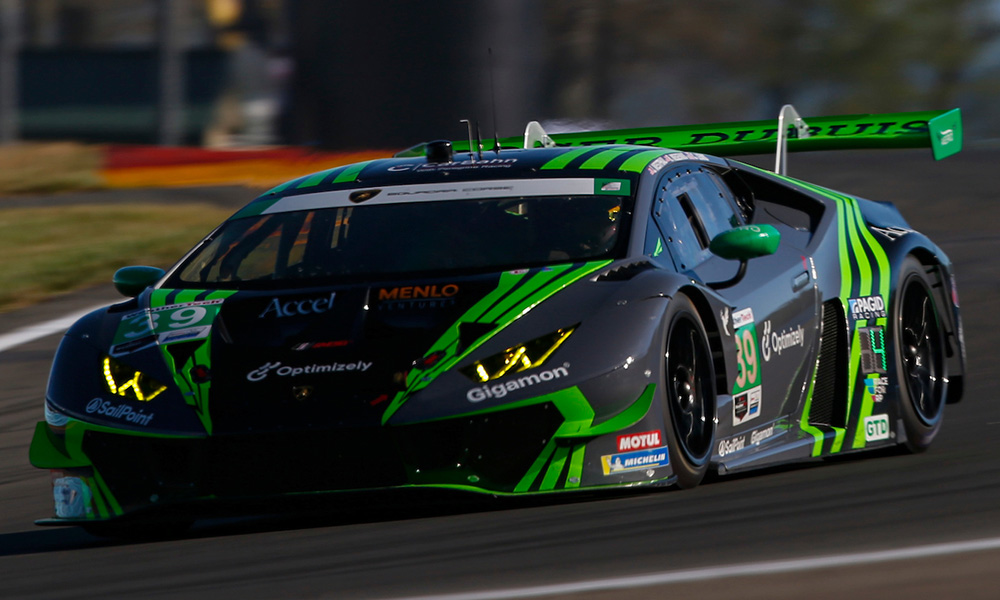
Photo: Jake Galstad/IMSA
Basically, I’m trading for front grip in high-speed corners with more footwork at low speed corners, which is a worthwhile exchange. The only problem was, every change we attempted during Practice 1 and 2 to reign in the balance of the No. 39 was futile.
The trade didn’t pay off, and the car’s behavioral trends kept continuing in an undesirable direction.
This meant Robert had a hero expectation on his hands—a known quantity, but a challenging car to enter qualifying with and try to extract as much rolling speed as possible without losing control of the race car.
After a short, but risky 15-minute session for us, Robert was able to secure P9. A solid job, all things considered. Cue the end of Saturday.
Come Sunday, we had a 20-minute warm-up and the 6-hour race left on the plate, with just over an hour between the conclusion of Warmup and the race start. Post-qualifying (Saturday night), my teammates and I lobbied to go back to a platform that was more familiar for our car—something that had worked in races past.
A wholesale package change (springs, shocks, roll bars) — a hail mary of sorts before the race. The catch here was that IF it wasn’t better, we’d have to live with whatever guesses we had made for 6 hours of racing.
Luckily, the warm up was the best the race car had felt all weekend, and there was a collective sigh of relief from everyone on the team.
The race started and my teammates did a great job avoiding risk, as we expected this race to be a yellow-flag-filled-caution-fest, considering it featured the highest car count in some time, most of which were prototype cars with amateur drivers in them.
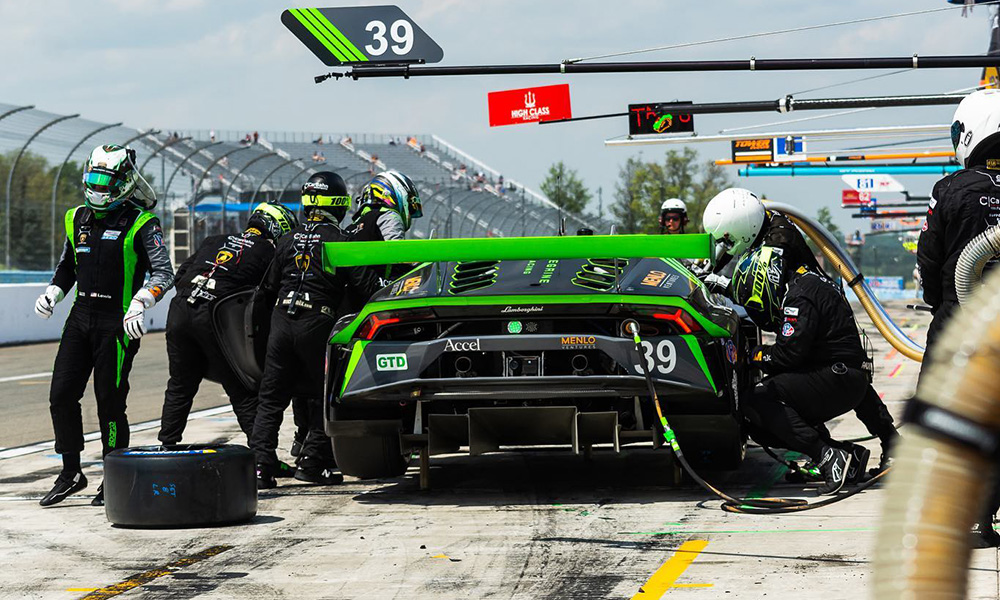
Photo: Peregrine Racing
MANY cautions later, along with track limits, and incident responsibility penalties/drive-throughs assessed to others for spinning cars ahead, we had made it unscathed into the final two hours. I prepped my gear and took over the car with just under 2 hours to go.
Upon leaving pit lane, I protected the cold tires from the curbs for the first lap and a half until pressures normalized.
I got to work finding pace in our Lamborghini. By Lap 2, I had a fuel burn target number that I needed to hit, and I was able to make the number while catching the car ahead of me.
Things were going well, and the behavior was better, but not perfect. I had to protect the rear tires early while hitting the fuel number, but everything was manageable. We didn’t have the 1:46.00 pace of the turbo charged cars (BMW, Ferrari and Aston), but amongst the “rest” of the cars, we were in the same window of pace, more or less.
“Rain is expected to hit the track in the next 6-7 minutes,” was the message through the radio into my helmet. “Copy,” I replied.
As I was starting Lap 15 of my stint, I entered Turn 6, known as the beginning of the Boot, with three LMP2s behind me. I saw them in the mirror on my bumper, opened up from Turn 6, and stayed to the right, allowing half the track width for them as the first car (DragonSpeed No. 81) made it past.
The next car was the No. 20 High Class Racing of Fabio Scherer. He stayed close to my door as he too opened up Turn 6 as much as he could. An optimistic No. 29 Team Netherland car of Dylan Murry went to the left (the outside of Turn 7, upcoming) of the No. 20, making us three-wide.
As the No. 20 moved left to set up for Turn 7, there was contact side-to-side between Scherer and Murry, and then seconds later, contact again.
The second hit by the No. 29 of Murry pushed the No. 20 into the front half of my car sharply, making me a projectile careening towards the wall on my right side at 130 mph.
I hit the barrier that was about 10-15 feet away at 118 mph, maxing out our G meter at 16G and the front of my car imploded. With no control at all, I skipped from there across the track to the outside wall of Turn 7, hitting that barrier on the front left of our destroyed Lamborghini GT3 at 50 mph.
We were caught in the midst of drivers playing bumper cars at high speed when the race still had over one hour to go.
The result of those decisions on track are a destroyed chassis for us, which is beyond repair, and luckily nothing serious in terms of injury for myself.
Yet, both Murry and Scherer continued to race without any reprimand.
I am compelled to draw a few comparisons here based on the hardships my program is faced with.
Earlier in the race, if you went beyond the curbing too often in Turns 1 and 8, a potential time and speed advantage, you received a drive-through penalty from IMSA. Many were given.
Other cars had minor contact during overtakes, resulting in spins for competitor’s cars. Both Ferraris were penalized with drive-throughs even though all cars continued after their respective incidents.
When two LMP2s are bouncing off each other and hit someone completely unrelated, destroying that race car, ending their race and putting the whole season in jeopardy as the next event is five days out with no spare car in sight, no penalty is given.
The same LMP2 and GT crash happened this year at Le Mans to Corvette — a sideswipe with massive damage to the GT, and there WAS a penalty given to the LMP2.
In fact, the LMP2 responsible for destroying the Corvette was given a stop-and-go penalty plus 3-minute hold.
I feel it is the sanctioning body’s job (IMSA) to set an expectation and a precedent for driving standards, yet the poor decisions of prototype drivers at the Six Hours of The Glen went untouched—thereby effectively reinforcing that behavior.
I am disgusted with the decisions that the drivers involved made, and hope that they both rethink their responsibility in this format of racing to co-inhabit one track, rather than drive with disregard for other competitors. Just wait one more corner.
“Be better.”




















